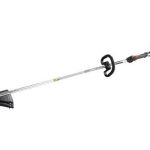Particularly in the summertime, homeowners are considering water usage and cost of water. With climate change, many regions of the United States has suffered through record-breaking heat. Under these conditions, households must use water on their lawns and gardens as well as during the regular routine of life. Water, after all, is not free and as mankind uses more of it, utilities are increasing in price. It is becoming ever more important that you know how much water you are using and have at least a ballpark understanding of how much it costs.

(Courtesy: iloveZitahliDays at flickr.com)
Watering The Lawn
Homeowners have come to understand that during the peak of the summer season, it’s best to water the yard in the early morning rather than the mid or late afternoon. It is suggested that the water should be allowed to penetrate to a depth of at least 3-inches so that the roots of the grass are able to absorb it.
Of course, water usage depends on the climate conditions of your region. However, a general rule is to make sure the lawn receives 1-inch of water per week during dry conditions.
There are a number of tricks homeowners can use to have a more exact guess of how much water the grass is receiving. One such tip involves the use of several containers like a coffee mug, metal can or plastic container. Place several containers around the yard just before you water it. Water as you would normally do. Once the process is complete, use a ruler to measure the depth of the water in each container.
Calculate Water Use
Supplying your lawn with 1-inch of water requires about half a gallon per square foot (0.623 of a gallon). So, every 10-foot by 10-foot of area requires more than 62 gallons of water.
Determine the width and length of your yard. Multiply the width times the length in feet. The answer will give you the total area of your lawn. Now multiply that number by 0.623. The answer to this calculation tells you the number of gallons used when watering your yard. For the sake of this example, it is assumed that your yard is either square or rectangular. If your lawn is of an uncommon shape, then a bit more sophisticated mathematics that includes geometry is necessary.
Calculate Water Usage Costs
Once you know how much water is used, then you can calculate how much it costs. Utilities that supply water usually give separate prices for water and sewer services. In both cases, the number achieved is based on the number of gallons of water you use.
So, for every 1,000 gallons of water usage, you are charged for the water used as well as sewerage. This is in the case whether the water goes down the drain or on your grass.
There are meters you can have installed on your home that measures water usage for irrigation purposes so that it is not included in the cost of sewerage. This can save you a decent amount of money. However, you will have to pay to have it installed and also pay a monthly minimum whether you are irrigating or not.
To calculate the cost of watering the yard, divide the number of gallons used by 1,000. Now multiply the number you get with the price you pay per 1,000 gallons. Include the sewage costs unless you have a separate meter.
So, let’s assume that your water utility charges you $2.00 per 1,000 gallons of water plus $4.26 per 1,000 gallons for sewage. The total cost is $6.26 for every 1,000 gallons of water used. That means when providing a yard that is 100-feet by 100-feet with one inch of water will cost more than $12.00 if you have a separate irrigation meter or $39.00 if you don’t.
If you water your yard every week during the summer, the cost per month will be $50 to $156.
(Source: todayshomeowner.com)






